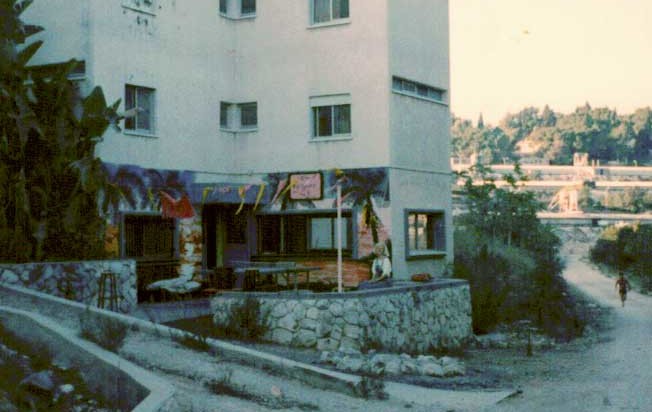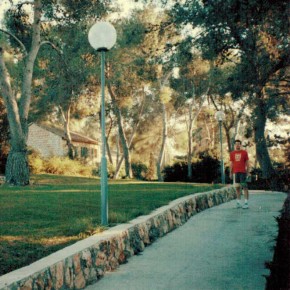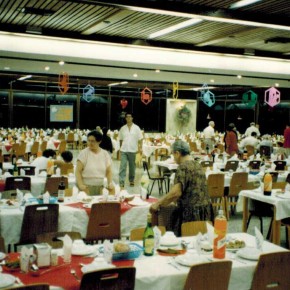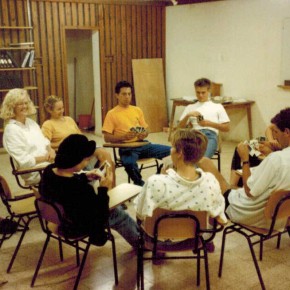Living on an Israeli Kibbutz
After graduating with my bachelor’s degree, I got on a plane and headed to live in Israel. Before graduation I had learned of an awesome opportunity for students in Israel called an Ulpan. Ulpan is obviously a Hebrew word which in today’s vocabulary might be best translated as a ‘work-study’ program. Today’s students typically work three days a week, and study three days a week with one day off. However, the origins of the Uplan are much more interesting that their modern evolved version.
The state of Israel, much as we now know it, was formed back in the 1940s just after the end of WWII. The Jewish people were formally given the land of the state of Israel (which has caused no end to strife with the Arabs who feel the land is theirs, or at very minimum should be shared, but I digress). As a result of this new Jewish nation, one of the first policies was to allow Jews from around the world to immigrate or ‘come home’ to the Holy Land (Israel). This mass immigration was not without its challenges, mainly in that the Jews were scattered among many different nations and had splintered into dozens of different languages. In the 1940s, they had no common language. The closest spoke language might have been Yiddish, which is mostly German with a bunch of old biblical Hebrew thrown in. In response to this challenge, the new Israeli nation did something rare, they decided to revive a dead language, and make it the official language of their new nation. The language, logically, was Hebrew. Modern Hebrew is quite a bit like ancient, biblical Hebrew, but has a huge number of vocabulary words added to it. There are also smaller changes, like adding a ‘be’ verb. For example, in English we might say, “I am hungry” or “I was tempted.” In biblical Hebrew there is no real ‘be’ verb per se, so this was added to make the language a bit more modern and functional. Other changes were made as well. Cursive script was established and for the most part is written without vowels. Hebrew, like other semitic languages, is based mostly of three letter combinations for most words. When you remove vowels, this becomes an interesting challenge and requires I fairly high level of proficiency to read.
Getting back to my story, in the 1940s, thousands and thousands of Jews immigrated to Israel from dozens of different linguistic backgrounds. This is where the Ulpan program came to the rescue. Israel established dozens of small communities called Kibbutzeem (Kibbutz is singular). Each Kibbutz was established for a different culture and language. For instance, I stayed on a Hungarian Kibbutz called Kibbutz Kfar Hahoresh (meaning small hill). A Kibbutz is pretty much the only functional socialist community ever created (please correct me if you know of others). People living on a Kibbutz have some personal property, but their homes, vehicles, etc are owned by the community. For the most part, they don’t work for money. They are given housing, eat in a common cafeteria for free, have a Kibbutz doctor and nurse which they don’t pay for, free schooling on the Kibbutz and a general store where they have credit to purchase clothing or music CDs. They have a community theater which several events each week like plays or films. Again, all these things are free, as long as they are a part of the community and actively participating in the shared work load.
In the 1940s, when Hungarian Jews wished to immigrate to Israel, they immigrated directly to Kibbutz Kfar Hahoresh, the Hungarian community. When they arrived, they were greeting by Hungarian Jews who set them up with housing. They were given jobs and food and began taking language classes to learn Hebrew. They worked part time, and were in class part time. This acclimation language program was the Ulpan at its roots and each Jew agreed to stay in it for at least two years. After the end of two years, they were free to travel to other locations or move to a large city like Haifa or Jerusalem or, they could renew their contracts and stay at the Kibbutz for as long as they wished.
The Kibbutz Ulpan program worked great until the 1970s when Jews were not immigrating in mass to Israel. At this point, the Kibbutzeem were faced with a massive problem—lack of new people. Jews were leaving the Kibbutz to go work in the city and make their fortune and nobody was coming to replace them. Kibbutzeem were forced to shut down as the demand for their unique lifestyle and Uplan programs waned. As an attempt to breath new life back into the Kibbutz work force, Jewish leaders at Kibbutzeem turned to Gentile college students, primarily from Europe. They began offering university students a work study program. Each European student could move to Israel and live on a Jewish Kibbutz, studying Hebrew three days a week and working three with one day off. Or, if they didn’t want to study, they could just work six days a week and make a few extra Shekels. The whole idea was to bolster the Kibbutz work force enough to keep the doors open.
So, it was this program in which I enrolled. I lived at Kibbutz Kfar Hahoresh outside of Nazareth for almost a year. It was a unique experience to be sure. Much of the time I worked at their bakery, which provided about half of the bread for Israel. I will state, for the record, that Israeli health codes in bakeries are no where near those in the US. Nazareth was an interesting city in that it is predominantly Christian Arab, something that those of us in the US are not really aware of—Christina Arabs in Israel? Really? Yes, they do exists, and they are a lot like devout, practicing Catholics with Semitic type traditions of drinking strong tea.
Do I recommend the Ulpan experience? Absolutely! You can go for a month, or several. Your only out of pocket expense will be getting there. You’ll get to see Israel pretty much for free and live among the natives. I highly recommend it, especially for the college student trying to get a taste of the rest of the world.








2 comments